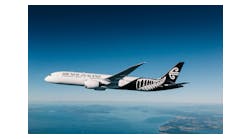Scottish Aviation was formally incorporated on 9 August 1935 having been founded by Group Captain David Fowler McIntyre and Douglas Douglas-Hamilton, Marquis of Clydesdale. They had achieved international fame two years earlier when they became the first men to fly over Mount Everest in specially converted biplanes. Their breakthrough into sustained high altitude flying in an open cockpit remains one of the pioneering feats of aviation.
Eighty years later their legacy lives on with BAE Systems Regional Aircraft currently responsible for continued airworthiness, customer support, design and engineering for over 550 BAE Systems-built commercial aircraft in service with more than 170 customers across 80 countries.
As well as many passenger and freight airline customers Regional Aircraft has engineering responsibility for the BAe 146 Atmospheric Research Aircraft and is helping operators in North America to convert BAe 146/Avro RJ airliners into waterbombers to fight wildfires. It is also capable of designing and producing upgrades to all aircraft types because of its European-wide approvals.
In 1935 enthusiasm for the Everest venture was strong in Scotland and both men were determined to create a new company ‘to establish the aviation industry in all its branches in Scotland’.
The company vision was to undertake training, aircraft overhaul, design, manufacture and production, establish and operate an airport and run an airline. But the primary goal was to train much needed pilots for the RAF as war clouds gathered over Europe.
The company bought 157 acres of land at Prestwick, with a further 190 acres for possible future expansion. Airfield facilities were rapidly constructed, a first contract was won from the Air Ministry, and flying training commenced in February 1936.
By the time flying training had transferred to the Empire Training Scheme in Canada and South Africa in 1941, SAL had created a fleet of over 120 aircraft and had passed out 1334 pilots, 1994 air observers and some 1200 wireless operators. SAL had trained five times as many personnel as any other UK company.
Profits from training enabled SAL to construct and equip its first factory for repair and modifications on other aircraft. First orders were secured in 1939 and modification and sub-contract work on a range of Vickers, Blackburn, Hawker and Westland aircraft followed.
More space was needed and the decision taken to purchase the Palace of Engineering from the 1938 Empire Exhibition at Bellahouston Park in Glasgow and re-install it at Prestwick. This was done between April and September 1940.
This iconic building survives today and was one of the main buildings for SAL and then British Aerospace/BAE Systems. It is now the home of Spirit Aerosystems which is a major supplier of wing components and other structural assemblies to both Airbus and Boeing.
During the war years thousands of American-built aircraft were handled at the newly expanded Prestwick Airport and SAL became the prime location for servicing and modifying them to British operational standards. This was in addition to thousands of British-built aircraft and engines that were repaired and overhauled.
Because of SAL’s earlier wireless operator training, radio communications facilities were in place at Prestwick, so transatlantic air traffic control was moved from Gloucester – and still flourishes today as the Scottish and Oceanic Area Control Centre. Prestwick was designated in 1945 as one of four terminals in the UK for international traffic.
Post-war SAL set up Scottish Airlines which for fourteen years flew services on behalf of many international airlines and created national airlines in Greece and Luxembourg.
First steps into aircraft design and construction came in 1947 with the Prestwick Pioneer and a few years later with the bigger Twin Pioneer. Both aircraft had remarkable short take-off and landing performance and 145 were built.
During the 60s and 70s SAL undertook aircraft aerostructures, maintenance, upgrades and modifications to both civil and military aircraft. A long-term contract with Lockheed meant the production of 773 aircraft sets of C-130 Hercules fuselage panels and pylons. A 25-year association with the Royal Canadian Air Force was for the overhaul and maintenance of its European-based fighter/trainer aircraft.
From the 1970s to the mid-1990s SAL (which became part of British Aerospace in 1977) built aircraft such as the Bulldog ab-initio trainer, the Jetstream multi-engine trainers for the RAF and observer trainers for the Royal Navy and then the improved Jetstream 31/32 18 seat mini-airliner which found world-wide acceptance. This was followed by the bigger 29-seat Jetstream 41.
When BAE Systems was formed in 1999 the Prestwick unit became part of BAE Systems Regional Aircraft, responsible for Jetstreams, the Hatfield and Woodford-built 80-112 seat BAe 146/Avro RJ regional jetliner and 64-seat Advanced Turboprop (ATP) and earlier BAe 784 turboprops. With the end of manufacturing, in 2002 Regional Aircraft was re-launched as a service and support business based at Prestwick, a task it continues to this day.
Apart from the legacy of the airport and ATC centre, SAL and its successors designed and built just under 1000 aircraft, constructed thousands of aerostructures parts and maintained countless aircraft leaving a lasting imprint and an aerospace community at Prestwick that flourishes today.





